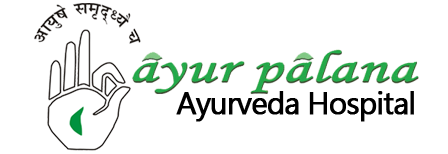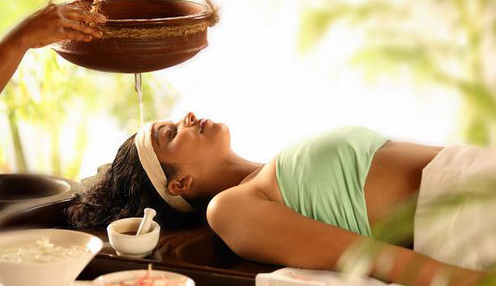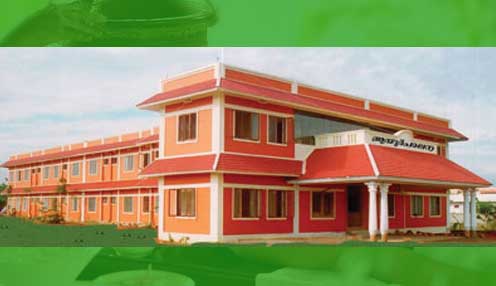Panchakarma
Ayurveda emphasizes preventative and healing therapies along with various methods of purification and rejuvenation. Ayurveda is more than a mere healing system; it is a science and art of appropriate living which helps to achieve longevity. It can also guide every individual in the prevention of disease and long term maintenance of health. To achieve this balance state of body mind and consciousness, Ayurveda prescribes Panchakarma Therapy for the cleansing of body toxins.
What is Panchakarma?
In Sanskrit ‘pancha’ means five and ‘Karma’ means the therapeutic measures. Therefore panchakarma stands for the five types of therapeutic measures. These are undertaken for the purification of the body and Ayurveda considers it necessary before the start of any other therapy. The logic being that as a cloth needs to be purified or cleaned of impurities and dust before it can be permeated with new colors; similarly the body needs to be purified before it can be permeated with new colors of youthfulness, health, vigor etc. In fact, most of the time, Panchakarma is an end in itself rather than a prelude to other therapeutic measures.
 The panchakarma therapy of Ayurveda is comprised of five basic types of advanced treatments for the evacuation of vitiated ‘doshas’ (toxic materials) from the body. One can consider this as body de -tox programs. They are ‘Vamana’ (therapeutic emesis), ‘Nasya’ (nasal medication), ‘Virechana’ (therapeutic purgation), ‘Vasti’ (medicated retention enema or medication to enteric nervous system) and ‘Raktamoksha’ (blood letting treatment).
The panchakarma therapy of Ayurveda is comprised of five basic types of advanced treatments for the evacuation of vitiated ‘doshas’ (toxic materials) from the body. One can consider this as body de -tox programs. They are ‘Vamana’ (therapeutic emesis), ‘Nasya’ (nasal medication), ‘Virechana’ (therapeutic purgation), ‘Vasti’ (medicated retention enema or medication to enteric nervous system) and ‘Raktamoksha’ (blood letting treatment).
These practices are extremely helpful in relieving the deep seated diseases as well as being beneficial for maintaining and improving physical and mental health.
Purvakarma (pre purification measures for panchakarma)
Before the actual operation of purification begins, the body is to be prepared in prescribed methods to mobilise the toxins for an easy elimination. The two procedures are ‘snehana’ and ‘swedana’.
a.Snehana (oileation, internal and external). External oil massage is called Abhyanga. Oil is applied to the entire body with a particular type of massage which helps the toxins to move towards the gastro- intestinal tract. Oil massage also make the superficial and deep tissues soft and supple, thus helping to remove stress, increase vascular circulation and to nourish the nervous system, Snehana is given daily for three to seven days, as indicated. By oral oileation, the body is saturated with the medicated fats as a preparation to eliminate body toxins.
b.Swedana is sudation or sweating and is given every day immediately following the snehana. An herbal concoction may be added to the steam to further loosen the toxins from the tissues. Swedana liquefies the toxins and increases the movement of toxins into the gastro- intestinal tract.
Besides these there are many other procedures which are done as a part of pre-operative procedure (For ex. massage and steam) or which are used for specific purpose (for ex. shirodhara which helps to relieve mental stress) The most commonly done procedures are as follows.
1, General and special massage: – General massage is the primary massage which is done prior to all pachakarmas. As per the requirement this can be a full body massage or massage over a single part. The oils used in this massage differ from person to person depending upon various factors such as climate, constitution, type of disease etc.
Special massage is the massage done as treatment itself. This is used in various diseases like paralysis, spondylosis, slip-disc, cramps, sciatica, parkinson’s disease, asthma, mental stress etc.
2,Shirodhara :- In this procedure a thin stream of oil or medicated concoction is poured over the forehead from a certain height. This is beneficial in diseases of the head like migraine, sleeplessness, mental disorders, mental stress etc.
3. Shirovasti:- This is a procedure in which a belt is fastened around the head covering the portion of the forehead, to form a well like space over the head. This well is then filled with oil and kept for some time. This is beneficial in diseases of the head, especially in difficulties arising due to injuries to the head.
4. Kativasti:- The same procedure as explained above is done over the waist. Instead of a belt, a metal ring is used to form the well. This is very effective in backaches, slip disc, sciatica and other similar disorders.
5. Avagah; – In this procedure, body parts especially the hip and lower limbs are immersed in medicated decoctions kept in a tub. This is beneficial in relieving pain and stress in the affected body part. It is used in cases of cramps, paralysis etc.
6. Parishek : In this procedure a percolation of medicated decoctions or oils is done over the whole body or over the affected part. It is helpful in relieving strains accumulated in the affected body parts.
7. Sarwangadhara :- In this procedure a stream of oil or decoction is held over the whole body. The procedure is similar to shirodhara except that it is performed over the whole body. This helps in relieving stress, strain and pain of the affected parts.
8. Njavarakizhi;- This kerala special treatment includes Snehana, swedana and rejuvenation therapy. It improves the health and vitality and cures the concerned disorders of the body. This treatment is done with bolus of special type of rice (navara), cooked in decoctions.
9. Bolus treatments with medicated meats, leaves, powdered grains etc. are Kerala special treatments for joint disorders and nervous disorders. They are also rejuvenating.
All these external treatments are preparation for Panchakarma therapies.
Pradhana Karmas-panchakarmas
1. Vamana: Emesis Therapy
This treatment is indicated in various types of allergies, skin diseases, Asthma etc.
2. Virechana: Purgation therapy
Chronic fever, P.U.O., rheumatic disorders, constipation, skin diseases etc. are treated with therapeutic purgation.
3. Nasya: Nasal administration
The nose is the doorway to brain and consciousness. An excess of bodily humors accumulated in the sinus, throat, nose or head areas is eliminated by means of the nearest possible opening, the nose.
4. Vasti: Enema Therapy
Vata’s predominant site is the colon. Enteric nervous system mirrors the central nervous system. Ayurvedic vasti involves the introduction into the rectum, of herbal concoctions of sesame oil, and certain herbal preparations in a liquid medium. Basti, is the most effective treatment of vata disorders i.e. Disorders of nervous system. It relieves constipation, distention, chronic fever, cold, sexual disorders, kidney stones, heart pain, back ache, sciatica, bone degeneration, other pains in the joints etc. Many other Vata disorders such as arthritis, rheumatism, gout, muscle spasms and headaches may also be treated with vasti. Vasti therapy is divided in two main types. Anuvasana Basti is medicated oil enemas and Niruha vasti is medicated enema with decoctions and medicated oils.
5. Raktamoksham.
The process which is used to remove the impurities of blood is called rakta moksham. This is done through vain inession and local removal of stagnated blood.






























